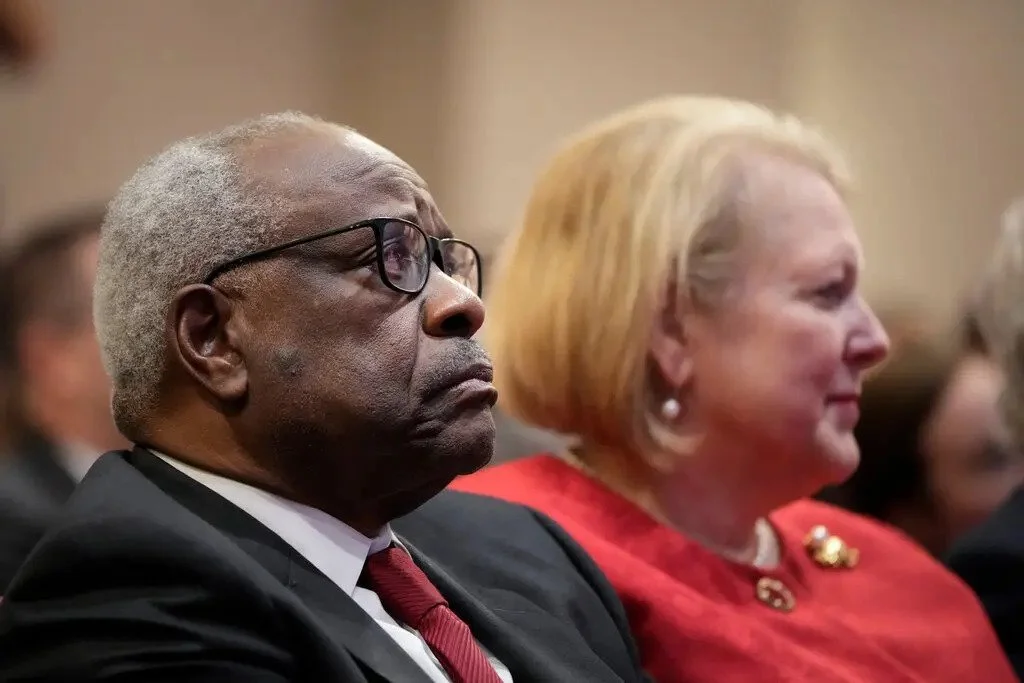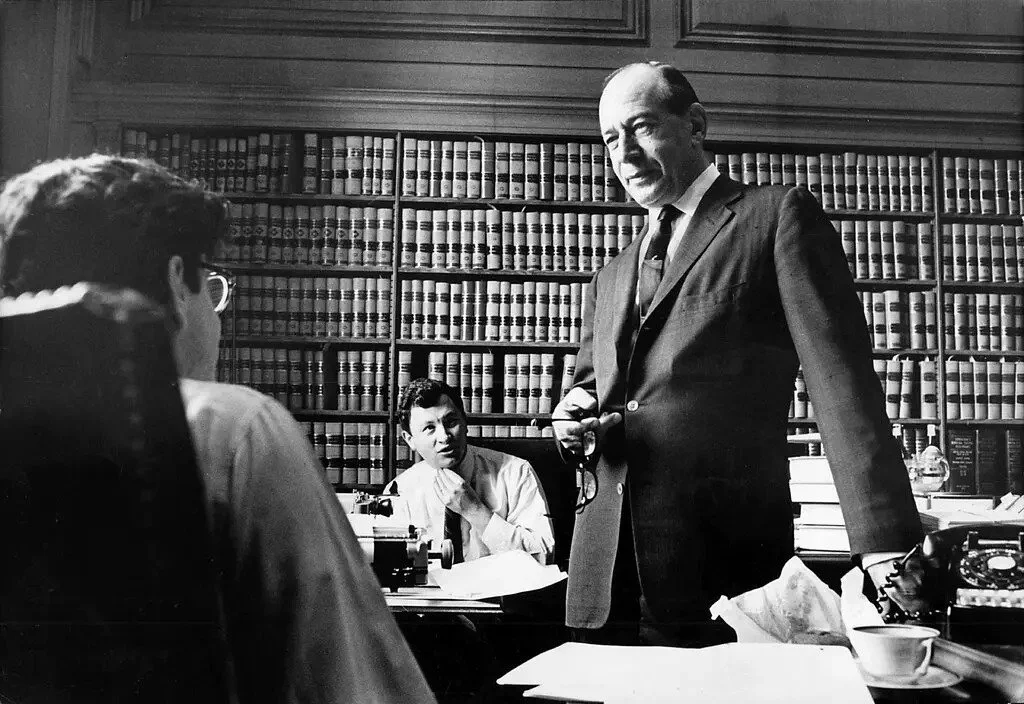54 Years Ago, a Supreme Court Justice Was Forced to Quit for Behavior Arguably Less Egregious Than Thomas’s



Justice Clarence Thomas and his wife, Ginni, in 2021.Credit...Drew Angerer/Getty Images
There are two distressing aspects to the scandal of Justice Clarence Thomas’s years of accepting luxurious vacations and private jet trips from a billionaire, as revealed last week in a damning investigation by ProPublica.
by Adam Cohen
The first is that these gifts came from a man who seems to have strong feelings about issues that come before the Supreme Court. The second is the lack of bipartisan outrage at malfeasance that corrodes the standing of the nation’s highest court.
Suggesting that Democrats and Republicans agree on anything involving the Supreme Court these days sounds like the ramblings of a madman. But it is worth recalling that the last time such serious allegations were made against a sitting justice, Congress did respond firmly and in bipartisan fashion. Justice Abe Fortas’s departure from the court in 1969 is both a blueprint for how lawmakers could respond today and a benchmark of how far we have fallen.
Fortas, a Democratic appointee, got caught up in a scandal that involved much smaller dollar amounts than the lavish trips Justice Thomas took, even factoring in inflation. Fortas accepted $20,000 to consult for a foundation working on civil rights and religious freedom. Justices consulting for nonprofits was once not so unusual: William O. Douglas had a paid position with the Albert Parvin Foundation, and Warren Burger had one with the Mayo Foundation.
Unfortunately for Fortas, the businessman who started the foundation that had retained him, Louis Wolfson, was investigated by the Justice Department for financial improprieties and eventually convicted of securities violations. In 1966, Fortas quit the foundation and returned all the money he had accepted.
There were other clouds around Fortas. His contract with the foundation was originally for $20,000 in annual payments for consulting work for the rest of his life, and there was an earlier controversy over a course he was paid $15,000 to teach at American University while on the court. He also had an unfortunate habit of continuing to offer advice to President Lyndon Johnson, whom he had long advised, even after joining the court. But it was his involvement with Wolfson that forced him off the court.
In 1969, Life magazine reported on Fortas’s long-extinguished ties to Wolfson’s foundation and on the money he had returned, and a scandal ensued. We now know the Nixon administration was helping Life with its investigation, including with some improper leaks, in an attempt to drive Fortas off the court.
Abe Fortas with his Supreme Court clerks in 1967.Credit...George Tames/The New York Times
When Life’s revelations appeared, Republicans in Congress demanded that Fortas resign. That was not surprising — the liberal Fortas was appointed by Johnson. What was remarkable by today’s standards is that Democrats demanded his ouster, too. Walter Mondale of Minnesota was the first Democratic senator to do so, and Senator Joseph Tydings of Maryland, a liberal Democrat who had been one of Fortas’s biggest supporters, soon followed. It packed a real punch when The New York Times reported on the front page, “Tydings Declares Fortas Must Resign Immediately.”
These Democrats called for Fortas to step down, even though President Richard Nixon, a Republican, would appoint his successor, which would help to flip the court from a liberal majority to a conservative one. They made clear that they were more concerned with the court and the country than with their ideology or their party. “The confidence of our citizenry in the federal judiciary must be preserved,” Tydings declared.


